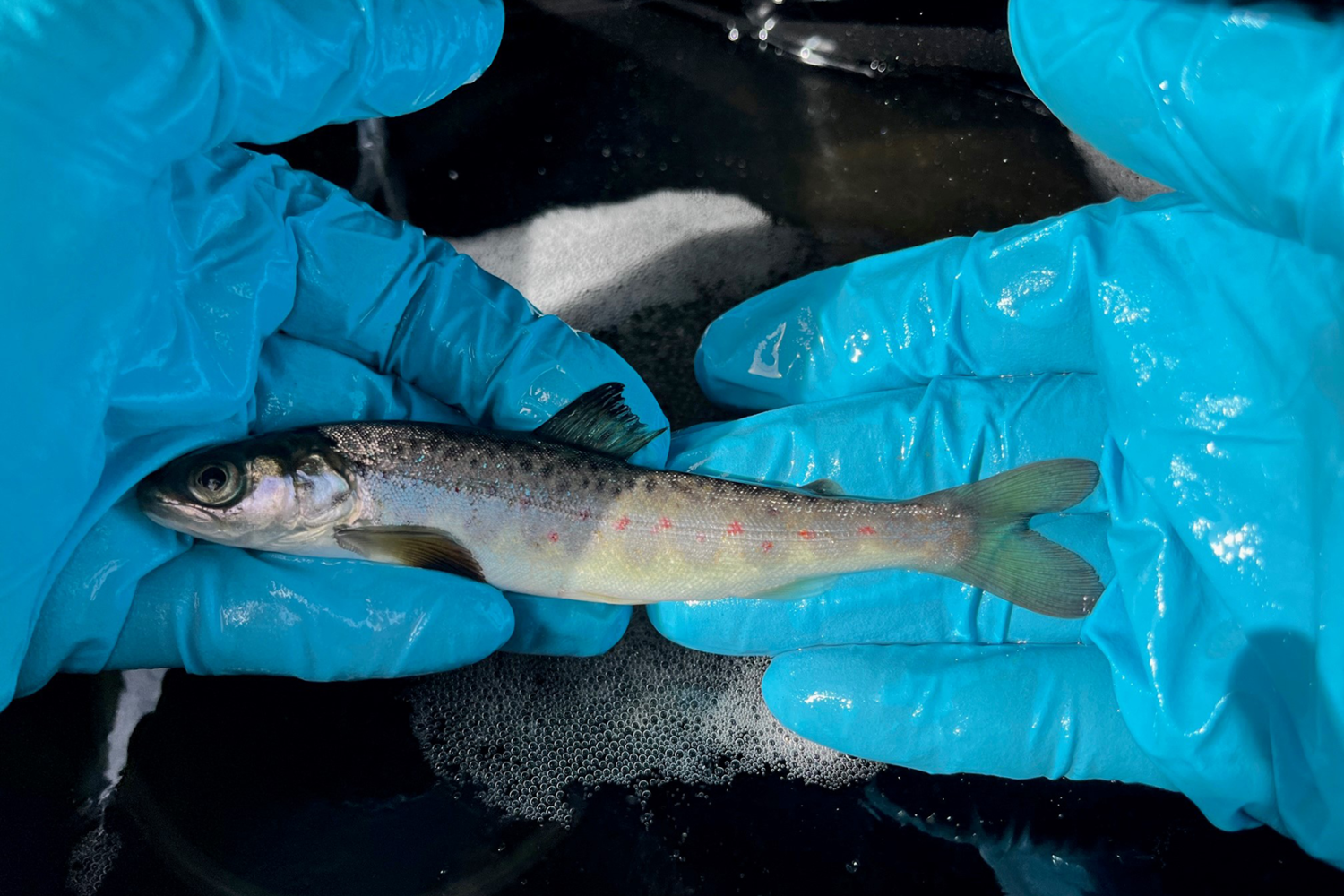Within the Improve Aquatic LIFE project, a comprehensive study of fish migration is being conducted using Passive Integrated Transponders (PIT) tags and acoustic telemetry. The aim of the study is to better understand how migratory fish species are affected by river restoration measures. By tracking the movements of fish, we can evaluate the impact of measures such as the removal of migration barriers, the restoration of natural stream habitats and improved water quality.
How does PIT-tag technology work?
PIT-tags are small electronic devices that act as individual ID tags for fish. They are implanted under the skin and transmit a unique code when the fish passes specific receivers. The technology is used to:
- Track fish movements
- Study how they are affected by restoration measures
- Measure survival and return to nursery and spawning grounds
Where is the study taking place?
Fieldwork is carried out in four prioritized river basins:
- Rönneå River (Bäljaneå River, Klövabäcken River and Rössjeholmså River)
- Kävlingeån River
- Örekilsälven River
- Lärjeån River and Fämtan River (Göta River)
In each area, around 1000 fish per target river are tagged, mainly Atlantic salmon and sea trout, which are important indicator species for river ecosystems. To capture their movements, stationary antennas (receivers of PIT-tag signals) and acoustic recievers are placed in the target streams. In addition, portable antennas are used to detect tagged fish in specific stretches.
Why are these studies important?
The studies provide important information about how fish move through rivers and how they are affected by environmental changes and human interventions. Through this research we can:
- Evaluate the impact of measures to restore free migration routes – By studying the passage of fish past previous migration barriers, we can assess the effectiveness of our interventions.
- Improve fish habitats – By analyzing where the fish prefer to stay, we can target restoration efforts to the right areas.
- Contribute to EU´s environmental goals – The study supports the EU’s goal of restoring 25,000 km of free-flowing rivers by 2030, as a part of the Biodiversity Strategy.
- Strengthen populations of threatened species – By improving habitats and migration opportunities, we can help protect and rebuild populations of salmon, trout and other migratory fish species.
Next steps
The collected data will be analyzed continuously throughout the project and the results will be used, among other things, to improve future water conservation efforts. We look forward to sharing our results and insights the project progressess!

